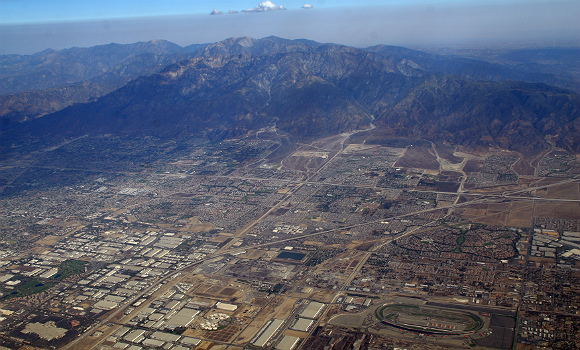
San Gabriel Valley (Photo Credit: Doc Searls/Flickr)
The San Gabriel Valley in Los Angeles County is a large region. 1.77 million individuals live in its 31 cities and unincorporated areas. The regional economy has been recovering, slower than in some areas of California, but that’s changing. In fact, the economic forecast over the next two years is rather bright.
The San Gabriel Valley Economic Outlook recently captured how important the valley’s geography, demographics, and future are to businesses and organizations headquartered in the county. The opportunities and challenges are unique to this region’s location and significant for local leaders.
“The San Gabriel Valley is often overlooked as a unique economic region,” said Ed Rendon, chair of the San Gabriel Valley Civic Alliance. “But our size and the proximity of our region to Los Angeles create great potential that we are tapping into.”
Local consumers, business leaders, and policymakers are feeling the most optimistic since the post-recession period, according to experts at the event. However, structural issues remain, such as affordable housing, educational attainment, wage growth, decreased purchasing power, infrastructure needs, and a gap in consumers’ knowledge of financial services, products, budgeting, and planning.
And economic priorities that have been emphasized for four years at the California Economic Summit were repeated at the Economic Outlook event: We need to invest in workforce preparation and infrastructure. Attracting (and training) skilled workers, increasing college enrollment and completion rates, upgrading the state’s physical infrastructure, and implementing careful management of the state’s finances and water resources are among the complex and expensive investments that we need to make.
(CA Fwd recently issued a report called Financing the Future which discusses where investments should be made and some ways to pay for it. Workforce and infrastructure are two major themes.)
Another interesting aspect from the San Gabriel Valley event was the need to promote more financial literacy.
“Today, the typical worker will have a high school diploma and be responsible for planning for his or her household’s financial future,” said Robert Kleinhenz, keynote speaker and chief economist for the Kyser Center for Economic Research, in an interview. “In an era of 401k plans replacing pensions and other types of employment benefits shifting, it’s incumbent on us to make sure these individuals are financially prepared. We need financial education and partnerships in this area more than ever before.”
Attendees learned that the San Gabriel Valley economy will grow faster in 2015 and 2016 than over the past couple of years. People have been moving in. New home building permits exceeded the national and state trends, rising 61 percent (2,892 units) in 2014. The rate in the next two years won’t match that, but still will be robust.
Health services and leisure/hospitality are capturing a growing share of total employment, with health services particularly robust. In the last decade, health care employment is up 67 percent.
Employment payrolls in the SGV are projected to hit $33.1 billion in 2016—a 12 percent increase from 2013 and more than 650,000 jobs exist in the Valley.
Like California as a whole, the economic recovery has been uneven in the San Gabriel Valley. The San Gabriel Valley has affluent areas and areas that are struggling, which is reflected in the local employment rates. In affluent areas like Arcadia, La Canada and San Marino, the unemployment rates are lowest. In working class cities like Baldwin Park, El Monte and Irwindale, the unemployment rates are highest.
For more stats on the region, you can find the full economic outlook report posted on the San Gabriel Valley Economic Partnership’s website.
About the author: Matt Wrye is manager of media relations for the California Credit Union League, which represents nearly 10 million credit union members across California. He can be reached at 909-212-6043 or mattw@ccul.org.

